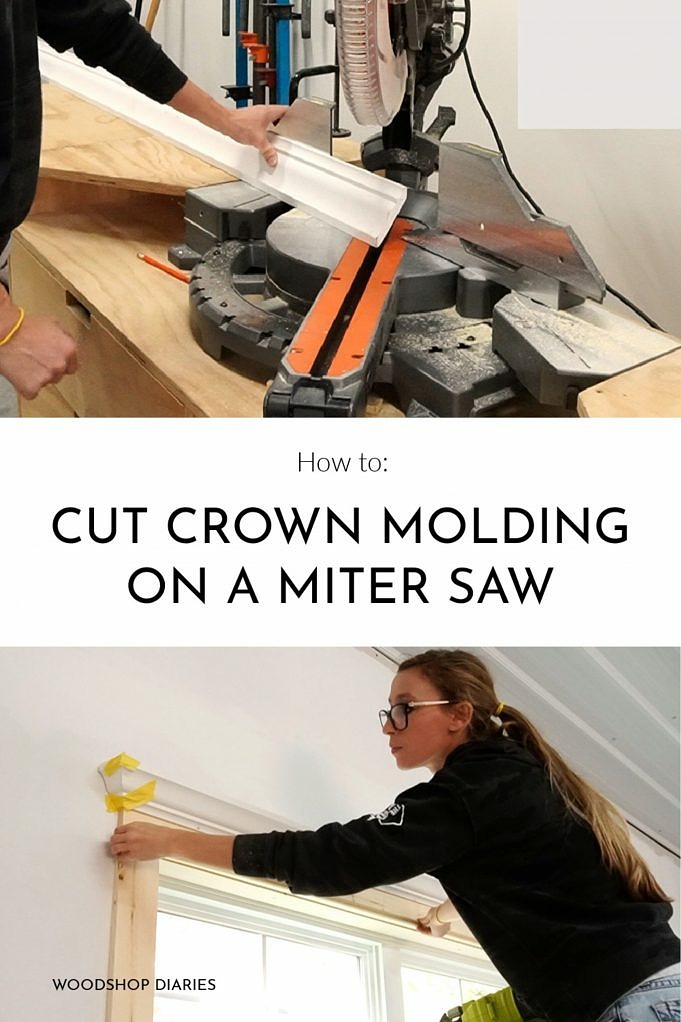To cut crown molding, a miter saw is the best tool.
Crown molding, also known as cornice or cornice, is a decorative trim type that is distinguished by its gracefully flared design.
Crown molding can be a bit more difficult than other trim types due to its flared design. However, it is still possible by almost anyone.
You can cut crown molding accurately with the help of your miter saw and some knowledge (this guide).
This is how to cut crown molding using a mitersaw.
What You’ll Need
Our guide’s title suggests that a miter saw is the best tool to cut crown molding.
Here’s what you need:
Step 1: Measure And Mark
This project, like most others, starts with accurate measurements.
Measure the wall length where crown molding will be installed using your tape measure.
This particular project is very important. Even a small error of 1/41 cm can cause serious problems.
Keep this in mind when measuring. To double- or even triple-check your work for accuracy, measure twice or three times.
After you have taken accurate measurements, use your pencil to mark the cut lines on each crown molding piece.
You might consider making each cut slightly longer than necessary, for example 1/18 to 1/16 inches.
Next, fit the pieces together. Keep slicing the extra length from each piece until they fit tightly together. This will prevent any errors that could make your crown molding ineffective.
Step II: Make The Cut
Now comes the hard part: cutting.
You will need to cut angled pieces on both ends if you want the crown molding to fit together in a corner.
This should ensure that the crown molding pieces fit flush together.
Most homes have approximately 90 corners. This means that every piece must be cut at 45 degrees. This will ensure that each piece is cut at a 45-degree angle. The pieces then join together to make a 90-degree angle.
A miter saw must have an adjustable blade and a swiveling handle to allow you to line up cuts at the right angle.
Make sure that you turn the crown molding on its backside before making any cuts. To minimize damage to the blade’s teeth, you should cut from the back to the front.
Each piece of crown molding should be aligned with the miter saw’s fence.
It is very useful to have someone help you hold long pieces. You can also make a support using sawhorses.
Each cut should be made by gently running the blade into the crown molding along your cut line.
Step 3: Join And Scab
It is difficult to join two pieces of crown molding in a corner.
This requires precise measurements and angled cuts. It is best to make the cuts slightly longer than necessary, as mentioned previously. You can then trim off small pieces until you get everything just right.
Another situation that is common is the requirement for a longer, straighter piece of crown molding than what is currently available.
This means that if you want to extend a single wall in your home, you will need to join two pieces crown molding.
One intuitive way to do this is to attach two pieces together of crown molding with their flat ends touching.
This method, although simple, can lead to poor and unprofessional workmanship.
For a flush look, make an angle cut on both the pieces to ensure they are slightly above each other.
This is also known as scabbing crown mold. Adjust the blade to make a 22.5 degree cut at each end so they fit together in a 45° angle.
Last Thoughts
If you’ve never cut crown molding before, it might seem daunting.
The project is actually not that difficult if you have the right miter saw, and the ability to double-check all your measurements.
You can do both, and I’m sure you’ll be able to cut and install crown molding without any problems.
We have compiled great DIY ideas that you can use for next projects once you’re done with this project.
Please enter your text here



